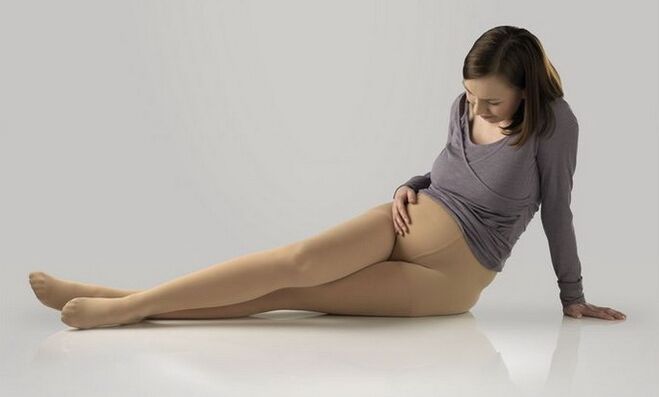Vein pathologies are most often observed in diseases of the lower extremities, however, in some cases, a manifestation such as varicose veins of the labia in women can occur even in the absence of problems with the legs. This condition can be caused by a variety of factors that negatively affect the veins in this area, a violation of the process of blood movement in the pelvic organs, as well as features of lifestyle and work. Most often, such a pathology of a woman's genitals is observed in early pregnancy, when the load in this area increases occasionally, however, the symptoms of this disease can appear and with a number of provocative factors that must be taken into account. to maintain the health of the female reproductive system.
What is the disease?
Varicose veins of the labia in the presence of the characteristic symptoms of this pathology can be observed due to hereditary predisposition, however, the onset of pregnancy has the greatest impact on the development of the disease and its further progression. It is during this period that hormonal changes occur in the body, body weight gradually increases, which leads to an increase in pressure on the genitals of a woman with elongated veins, which characterizes the development of varicose veins.
Detection of this disease is performed by a phlebologist, who with an external examination can determine the initial stage of the disease. For a more accurate diagnosis, a series of studies of the woman's labia are performed, which will allow not only to identify the presence of varicose veins, but also to determine the stage of the pathology. Accurate diagnosis, during which varicose veins are detected, enables the doctor to design the most effective treatment regimen, which will allow to quickly eliminate the obvious manifestations of pathology.

The initial stage of varicose vein development in this part of a woman's body has relatively minor manifestations (for example, stiffness and a feeling of satiety in the perineum, itching and burning sensation, which appear more strongly during urination), however, the progression ofsymptoms increases, significantly reducing the overall quality of life of the woman and exacerbating the anxiety that may occur with the progress of pregnancy. Therefore, the earlier the necessary treatment is started, the easier the pregnancy will be tolerated by the woman and the less likely the side effects of this pathology will appear in the future.
Symptoms of varicose veins of the labia
Manifestations of the disease of the female genital area under consideration are quite characteristic, which makes it possible to identify it already in the early stages of development and prevent the worsening of manifestations. Varicose veins in the labia arise as a result of changes in hormonal levels and during the onset and development of pregnancy, when there is a significant increase in body weight, affecting a woman's genitals and her lower extremities.
Also, the following manifestations should be attributed to the symptoms of the disease in question:
- the appearance of a feeling of satiety in the perineal region;
- burning and itching, which are especially pronounced during urination;
- an increase in the size of the labia, which is due to the swelling of the veins from the surface of the organ;
- tissue swelling;
- discomfort during intimate relations;
- pain even during hygiene procedures;
- an increase in the size of the veins in the perineal region, which can also be detected when we investigate this area.
In addition to the listed symptoms, which allow you to detect the actual pathology already at an early stage of its development, subjective manifestations can be observed, which appear with the onset of pregnancy and with hormonal disorders.
Causes of varicose veins of the labia
Causes of circulatory disorders in the perineum and labia are most often the development of pregnancy, as well as hormonal changes in the body that occur during this period.

However, there are a number of factors that negatively affect the female genital area and predispose to the development of this pathology. Phlebologists refer to such provocative factors:
- Inheritance. If someone in the family has had venous disease, circulatory disorders or venous insufficiency, then a woman can cut varicose veins in the perineum, in particular, the labia, during pregnancy.
- A sedentary lifestyle and insufficient physical activity. Stagnation in the movement of blood, especially in the pelvic organs, can lead, with prolonged negative impact, to the development of this disease.
- Overweight. It is a considerable body weight that is mainly capable of provoking a negative effect on the veins of the lower extremities and small pelvis, therefore, by controlling its own weight, the timely elimination of excess pounds will help prevent the development ofvaricose veins in each part. of the body.
The tendency of the labial veins to decrease their tone, prolongation and disruption of the circulatory process can also become an indirect causal development of the pathology in question. The combination of provocative causes and factors should be considered as the main cause of the occurrence and further worsening of venous insufficiency in the perineum of the labia. Varicose veins of the labia tend to appear in the presence of direct reasons for its development (onset and development of pregnancy, hormonal changes in the body during this period), as well as in the presence of provocative factors and early detection of onset. pathology stage.
Varicose veins on the genitals, which appear during pregnancy, can be considered a fairly common disease, which in the first half of pregnancy appears in about 40-60% of pregnant women, during the development of pregnancy can be detected in 10-20%of women. A phlebologist and a gynecologist who manages the pregnancy will help to make the correct diagnosis in time, to design a treatment regimen and further preventive effects.
Treatment methods
Treatment of labial varicose veins is performed only after the final and confirmed diagnosis has been made, while the condition of the woman and the course of the pregnancy should be taken into account. It is necessary during the therapeutic effect to make the necessary adjustments, to identify possible side effects of drugs used in the body of a pregnant woman, so as not to provoke the development of side effects in the form of allergies; worsening of existing symptoms.
The most effective treatment methods for varicose veins of the perineum and labia are considered to be a combination of changes in a woman's lifestyle, increasing her physical activity, as well as performing some physiotherapy procedures to improve blood circulation to the organs ofpelvis. The use of medication is agreed in advance with the attending physician, a test for the occurrence of allergic reactions by the body of the pregnant woman is performed and an exposure scheme is drawn up that will eliminate the possible negative consequences of such treatment. Surgical intervention can also be performed, which is usually prescribed in the advanced stages of the disease.

Ointment for external use
Venotonic ointments ensure faster penetration of the active substance directly into the affected area, while symptoms are eliminated after the first application of the ointment. First of all, when using them, painful sensations and itching are eliminated.
Among the effective medications for the treatment of varicose veins of the labia are considered medicated ointments, which are applied to the affected area regularly 2-3 times a day for a period of time determined by the attending physician. The duration of their use depends on both the stage of the disease and the degree of sensitivity of the organism to the active substance of the chosen drug.
Surgery
Surgery can be described at an advanced stage of the disease, when the symptoms do not allow a normal sex life, gives uncomfortable and painful sensations in everyday life. Surgical intervention allows you to eliminate elongated veins, to stabilize the process of blood circulation in the labia.
However, this method of therapeutic action can be used only if there is evidence and with the appointment of a doctor.
Compression underwear
The use of compression dressings, which will ensure the normal position of the veins and provide the necessary movement in the lip tissue, is an excellent alternative to other methods of therapeutic action. There are several brands of such flax, usually prescribed in the early stages of the disease.
Home treatment with folk methods
Treatment of this pathology is possible at home using folk methods, however, this type of exposure must be agreed in advance with the attending physician. Most effective in the initial stage of pathology and as a prophylactic agent.
Varicose veins, which are characteristic of labial veins, can be treated with cold compresses, rowan juice, sitz baths.
Cold compresses, as practice shows, allow you to eliminate itching and burning in this area, to reduce the degree of swelling of the affected veins. They are usually used for a short period of time, after which an ointment chosen by the doctor is applied to the veins to increase the tone of the veins.
Rowan juice has been shown to be an effective remedy for treating and preventing decreased tone of large blood vessels and veins, taking it by mouth allows you to eliminate the obvious symptoms of varicose veins in the perineal region in women. Also, diluted liquid is used for cold compresses.
Sitting baths help reduce pain, relieve tissue swelling. Decoctions of medicinal herbs that relieve inflammation, rowan juice can also be added to such baths. Lubrication of the lips after such baths with ointments with venotonic effect gives an excellent result even with advanced stages of the disease.
Is there a threat to normal pregnancy with varicose veins of the labia?
The initial stages of the disease in question are not a threat to pregnancy, however, varicose veins in this area are the cause of unpleasant sensations in a pregnant woman, a decrease in her quality of life. It is necessary to timely detect varicose veins, which develop in the labia, during pregnancy - this eliminates even a small risk of its retention.
Patient advice
As recommendations for disease prevention, doctors advise avoiding the appearance of excess weight, controlling the amount of physical activity and preventing blood stagnation in the pelvic organs.
Varicose veins in the lab that develop during pregnancy is a preventable phenomenon. Health care, elimination of provocative factors will make the transfer of pregnancy easier.























